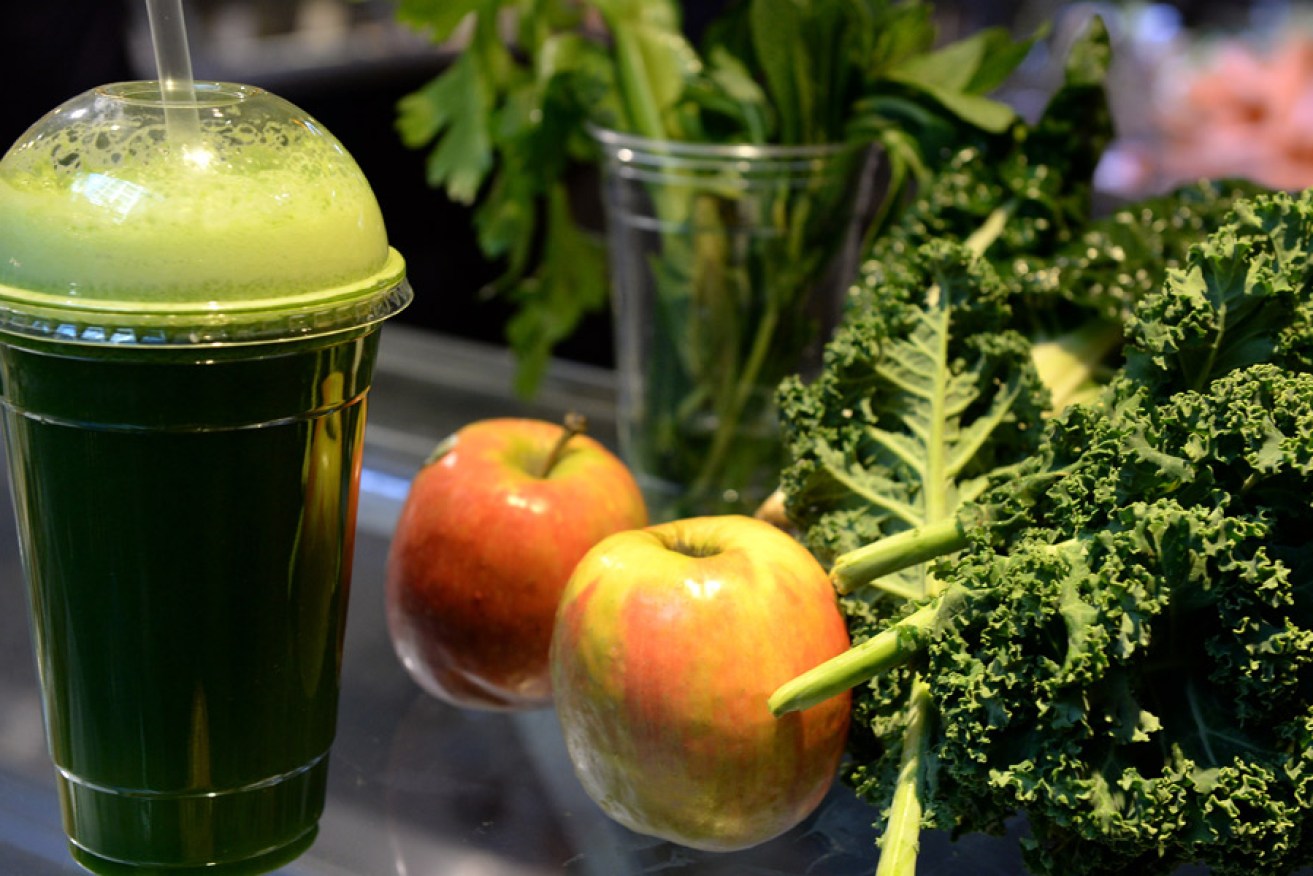Cold pressing: A new take on juice

Old-style fresh juice is being overshadowed by the cold-pressed varieties. Photo: AAP
Fresh fruit and vegetable juice has been touted as a health elixir (correctly or incorrectly) for some time now. Yet a new take on the humble juice, the cold-pressed variety, is proving to be an expensive habit.
Is this fad worth the money? And more importantly, is it making us healthier?
While the cold-pressed juice trend is relatively new in Australia, it has already swept New York – a city whose population is constantly on the lookout for the next best thing. Gone are the days of the Boost Juice-style fresh fruit juice or smoothie. Today’s juicing is all about the extraction process. Enter the cold press.
The process of cold pressing is, in fact, decades old. It involves grinding and pulverising vegetables and fruit as much as possible, before applying excessive pressure via a hydraulic pump to squeeze out every last drop of juice. The process uses very low levels of heat, enabling producers to label the resulting juice “raw” – a fancy buzzword that has consumers lining up for more.
The marketing spin from this extraction process is that unlike traditional juicing methods, cold-pressed juice retains a higher level of nutrients and “live enzymes” in each bottle, rendering it “healthier” than its traditional juice cousins.
Starting at around $US10 per 300ml bottle, these juices are flying off the shelves of New York’s specialty cold-pressed juice bars, with store owners capitalising on the city’s penchant for all things healthy, convenient and trendy.
Perhaps the most telling sign of this category’s strength in an industry already dominated by quick-fix health solutions is the recent $US30 million acquisition by Starbucks of Evolution Fresh, a US-based juice company offering “handcrafted” juices made using high-pressure processing.
Thanks to the cold press, the humble juice has now moved from a simple drink to a nutritious meal. Popular combinations contain a mixture of “superfoods” such as kale, spinach, collard greens, beetroot, ginger and lemon. The perception, at least among time-poor New Yorkers, is that they can down their daily nutrients in one bottle.
Despite its luxury price tag and its cult-like standing, the question still remains whether cold-pressed juice is actually healthy. While its proponents argue that the specialised extraction process enables maximum and targeted nutritional benefits, others beg to differ.
David Gillespie, best-selling author of Sweet Poison: Why Sugar Makes Us Fat, says that “drinking fruit juice is a nutritious way to get extremely fat”.
“Juicing anything (fruit, vegetables, grass [sugar cane]) is, by definition, keeping the sugar and water and throwing out everything else,” he adds.
According to Gillespie, juiced vegetables are no better than juiced fruit, which in turn is no better than sugar-cane. Why? At its core (excuse the pun), the process of juicing, even the cold-pressed process, still removes the fibre from the fruit and vegetables, meaning cold-pressed juice doesn’t offer all of the digestive benefits you would get from eating the food in its whole state.
Ridding a vegetable or fruit of its skin, flesh and fibre results in the sweetest part of the food being left behind, delivering a fructose (sugar) hit virtually straight into the blood stream.
That doesn’t seem to be stopping sales, however. Cold-pressed juices with labels such as “organic” and “raw” have consumers flocking to part with their cash in an attempt to get a quick, healthy fix.
How long this phenomenon will last remains to be seen. At least the green juices are introducing the masses to the concept of incorporating more vegetables into their diet, even if the primary message remains blurred.
Eating the real, whole food will always trump a juice, but unfortunately that just isn’t seen as cool in New York. At least not right now.
This is the first in a series of articles from Lucy Travers, an entrepreneur in the health and wellness industry who hails from Adelaide and now calls New York City home. In addition to her many roles in health-food start-ups, Lucy is also a health coach and writes extensively about health and wellness on her website, www.lucytravers.com. You can also follow her on Twitter at @LucySTravers




